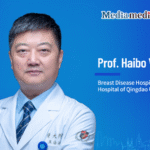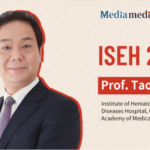
Editor’s Note: Unlike Western countries where cutaneous melanoma predominates, acral and mucosal melanomas are more common in China. With the rapid development of immunotherapy and targeted therapy, perioperative treatment strategies for melanoma are undergoing major changes, with neoadjuvant immunotherapy emerging as a key area of exploration. At the 28th Annual Conference of the Chinese Society of Clinical Oncology (CSCO), Professor Lili Mao from Peking University Cancer Hospital and Beijing Gaobo Hospital provided an in-depth interpretation of the perioperative therapy updates in the 2025 CSCO Melanoma Guidelines. Oncology Frontier invited Professor Mao for an interview to help clinicians better understand the updates and apply them to individualized clinical practice.Q1. Key Conceptual Shifts in Perioperative Therapy
Prof. Lili Mao: This year’s CSCO Melanoma Guidelines introduce several important updates regarding perioperative treatment. For cutaneous melanoma, we have added recommendations for dual-immunotherapy combinations in the neoadjuvant setting. For acral melanoma, two new neoadjuvant regimens have also been included for the first time. Overall, treatment strategies are shifting from purely adjuvant therapy toward neoadjuvant approaches. Internationally, the field of cutaneous melanoma has taken the lead. Last year, PD-1 monotherapy was included in the guidelines for cutaneous melanoma, but with a low recommendation grade due to limited evidence at the time. This year, with more large-scale randomized controlled trial data available, the level of evidence has been upgraded. For acral melanoma, neoadjuvant therapy was not previously included in the guidelines. However, growing evidence in recent years supports its use, and this year we have incorporated neoadjuvant therapy recommendations for this subtype as well. Going forward, clinicians will have more evidence-based options for neoadjuvant therapy in both cutaneous and acral melanomas—particularly for stage III patients—enabling broader application in clinical practice. Mucosal melanoma already had neoadjuvant therapy listed in the guidelines, but the current evidence level remains relatively low, and clinical outcomes are not as favorable. Further research is still needed to clarify its benefits and support wider adoption.
Q2. New Regimens and Recommendation Grade Changes
Prof. Lili Mao: Most of the neoadjuvant therapy data currently available come from studies in stage III patients, particularly those with nodal involvement. Data remain limited for metastatic stage III disease, so the guidelines primarily recommend neoadjuvant therapy for patients with lymph-node involvement. Some exploratory studies have evaluated neoadjuvant therapy in high-risk stage II patients, but the evidence is not yet sufficient to support routine clinical use. At this year’s ASCO meeting, an international trial presented early results in high-risk stage II patients, but the study failed to meet its primary endpoint. For now, we recommend following the traditional approach—surgery first, followed by adjuvant therapy when appropriate. For stage III patients, either neoadjuvant therapy or the traditional sequence of surgery followed by adjuvant therapy can be considered. Determining which approach is optimal will require further high-quality data.
Q3. MDT Collaboration and Perioperative Management
Prof. Lili Mao: Neoadjuvant therapy requires much closer collaboration between medical and surgical teams. In the past, the treatment pathway was relatively fixed: surgery first, then adjuvant therapy. Today, we must make individualized decisions—based on factors like nodal burden—about whether to proceed directly to surgery or administer neoadjuvant therapy first, followed by surgery and adjuvant treatment. It is important to emphasize that the goal of neoadjuvant therapy is not simply to downstage tumors from unresectable to resectable, but rather to improve survival outcomes in patients who are already considered resectable. Therefore, patient selection should focus on those who can undergo surgery. For unresectable cases, first-line systemic therapy may be used to attempt conversion to resectable disease, but this is conceptually distinct from standard neoadjuvant therapy. Close communication between medical and surgical teams is essential to evaluate each patient individually and determine suitability for neoadjuvant therapy. Another consideration is postoperative complication management. Anti-angiogenic drugs, immunotherapies, and chemotherapies can affect wound healing, but with careful perioperative monitoring and optimized management, the risk can be minimized. Data from current neoadjuvant trials suggest that the impact on postoperative complication rates is generally small, though certain high-risk patients warrant additional attention.
About the Expert
Prof. Lili Mao Chief Physician, MD Department of Melanoma and Sarcoma, Peking University Cancer Hospital Department of Melanoma, Sarcoma, and Genitourinary Oncology, Beijing Gaobo Hospital


